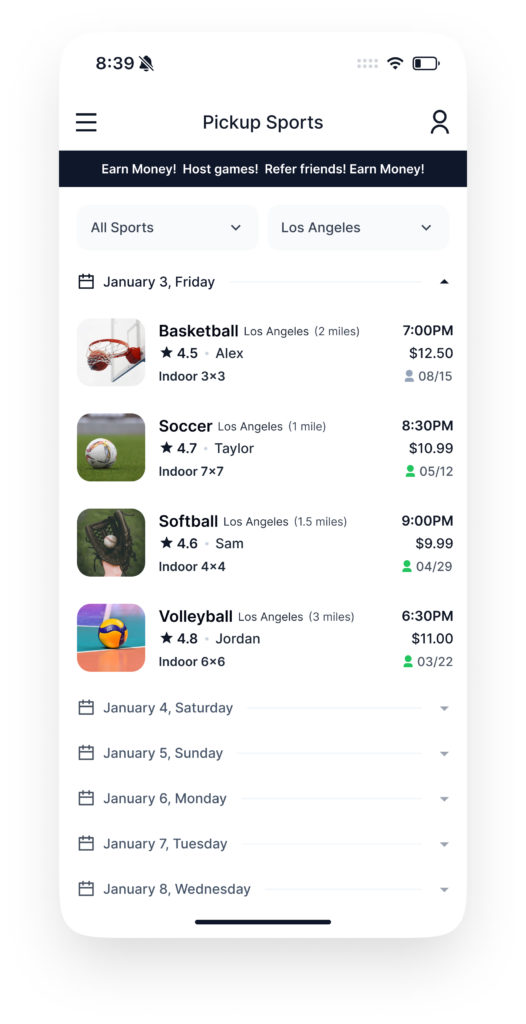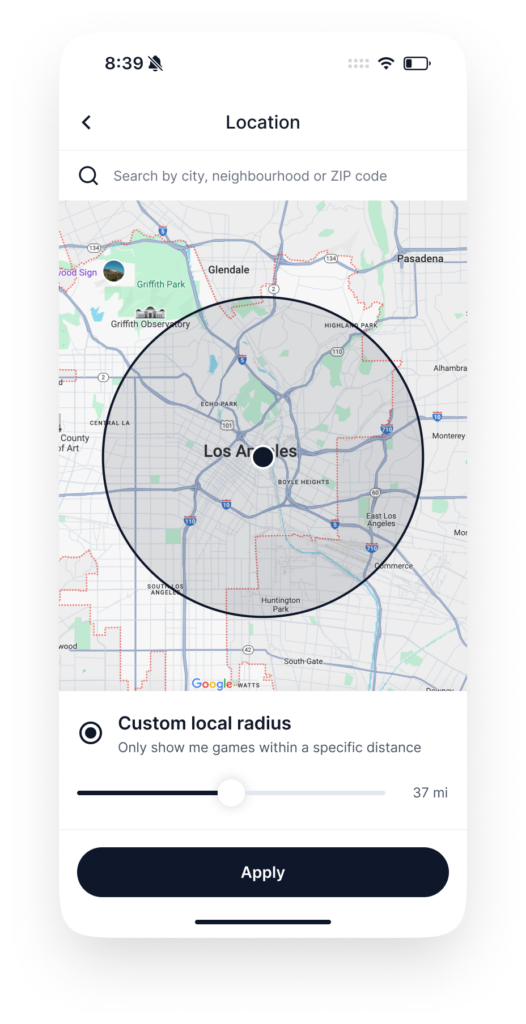The Cost to Make a Pickleball Court: A Comprehensive Guide
Are you considering building a pickleball court in your backyard, school, or community space? Perhaps you’re a passionate pickleball player looking to play more often or an organizer wanting to provide your community with accessible sports facilities. Regardless of your motivation, understanding the cost to make a pickleball court is essential for planning and budgeting effectively.
In this blog post, we’ll explore the various factors that determine the cost of building a pickleball court, the materials required, and the overall expenses you might incur. Additionally, we’ll highlight how the Pickup Sports App can help you connect with local pickleball leagues and players, making your investment even more worthwhile.
Understanding the Basics of Pickleball Courts
Before delving into the costs, let’s take a moment to understand what a beginner-friendly pickleball court involves. A standard pickleball court measures 20 feet wide by 44 feet long for doubles play, with a 14-foot high net in the center. Unlike traditional tennis courts, pickleball courts require less space and can be constructed in various outdoor and indoor locations.
Types of Pickleball Courts
1. Permanent Courts: These are typically built for long-term use using durable materials, such as concrete or asphalt. They require substantial investment but provide the best experience for serious players.
2. Temporary Courts: Often made with portable materials, temporary courts are a more affordable option, ideal for community events or casual use.
3. Multi-Sport Courts: Building a multi-sport court can accommodate various sports, including basketball and volleyball, thus maximizing versatility and usage.
Factors Influencing the Cost to Build a Pickleball Court
Understanding the variables involved when calculating the cost to make a pickleball court will help you budget more accurately. Below are the key factors that will impact your overall expenses:
1. Location
The location of your court can dramatically influence costs. Urban areas may have higher labor and material costs due to demand, while rural areas may offer more budget-friendly options. Additionally, if you’re planning to install the court in a community space, zoning laws may also play a role in the total expense.
2. Materials
The types of material you choose will significantly affect your costs. Here’s a breakdown:
Concrete: The gold standard for permanent courts, concrete typically ranges from $3 to $6 per square foot. The exact price can depend on preparation, finishing, and additional features such as color coating or textured surfaces.
Asphalt: A cheaper alternative to concrete, asphalt can be constructed for $2 to $4 per square foot. It’s worth noting that while asphalt may save money upfront, it might require more maintenance over time.
Portable Materials: If you opt for temporary or portable courts, materials such as PVC or interlocking tiles usually cost between $1.50 to $3 per square foot.
3. Labor Costs
Hiring a professional contractor can enhance the quality of your court but will also increase your expenses. On average, labor costs can range from $1 to $3 per square foot, depending on your region.
4. Site Preparation
Preparing the site is often an overlooked expense. This includes leveling the ground, drainage solutions, and removing any debris or vegetation. Site preparation can cost anywhere from $1,000 to $3,000, depending on your location and the condition of your land.
5. Net and Equipment
For a complete playable court, you’ll need a high-quality net system. Professional-quality netting costs between $100 and $300. If you include paddles and balls in your budget, be prepared for an additional $200 to $400 for a set of essentials.
6. Verification and Maintenance
Once your court is built, don’t forget ongoing maintenance or any future upgrades. Regular resurfacing (if applicable), cleaning, and any repairs can add $500 to $1,000 each year.
Estimated Total Costs
Taking the above factors into account, here is a rough breakdown of the total estimated costs:
Permanent Concrete Court: $15,000 – $30,000
Permanent Asphalt Court: $10,000 – $20,000
Portable Court: $2,500 – $6,000 (depending on size)
These averages can vary widely depending on your geographical location and the specific design of the court.
Creating Community with Pickup Sports App
Building a pickleball court is a significant investment, but it’s equally essential to think about how you can create a community around that court. Enter the Pickup Sports App—the perfect platform for connecting with adult sports leagues in your city.
Discover Local Leagues and Players
After investing in a pickleball court, the last thing you want is to find yourself playing solo. The Pickup Sports App allows you to easily discover local pickleball leagues, connect with fellow players, and join pick-up games in your area. Simply download the app and you’ll have access to:
Current Leagues: Find and register for local leagues that play regularly.
Group Play: Join pick-up games based on your skill level, ensuring you always find a game.
Community-building: Meet like-minded players who share your passion for pickleball and make friends along the way.
Organize Events and Tournaments
The Pickup Sports App can assist you in organizing events or tournaments right on your newly built court. Whether you want to host a community fun day or a competitive tournament, the app provides tools to help you coordinate teams, schedules, and notifications.
Maximize Your Investment
By using the Pickup Sports App, you are not just building a court; you’re also creating a community. Involve yourself with local players and leagues, which ensures that your newly constructed pickleball court is used efficiently and helps facilitate more games and activities.
Conclusion
Investing in a pickleball court can provide numerous benefits, from physical fitness to a social outlet. Costs can vary widely based on location, materials, and labor, but knowing what to expect can help you navigate your budget effectively.
After constructing your court, don’t miss out on the community aspect; download the Pickup Sports App to meet fellow players, join local leagues, and organize events. Community engagement turns a mere investment into a full-blown experience, ensuring that your pickleball court is always buzzing with activity.
Call to Action
Are you ready to start your pickleball journey? Consider whether building a court is right for you and your community. And while you plan, don’t forget to download the Pickup Sports App for a seamless integration into the vibrant world of adult sports leagues in your area!
By combining your love for pickleball with a supportive community, you’ll not only enjoy the benefits of an active lifestyle but also foster friendships and lasting connections along the way.
—
This blog post addresses the potential costs and benefits associated with constructing a pickleball court. It aims to optimize visibility for the Google search term “Cost To Make A Pickleball Court,” while smoothly integrating promotional elements for the Pickup Sports App, enhancing both the reader’s experience and community engagement.



